This article on growing chard is part of our Green of the Month series. To read the rest of the articles in the series, click here.
In case you don’t speak French (or visit lots of fancy restaurants), that title is my attempt at a little food funny. The term garde manger means “the keeper of the pantry.” The modern garde manger usually does other cool stuff, too, like make garnishes for plate-up, prepare cold dishes, and even ice-carve.
Originally, though, that title was literally applied to the person who guarded the food supply from rats and robbers, and ensured there was plenty of food to last through lean times. Food security was something the wealthy took very seriously. Having a dedicated garde manger looking out for your food stores was a sign of status and meant you were an important person.
As home-food growers, particularly those of us concerned about the precariousness of our modern food supply, we also have to be garde mangers of our own pantries and gardens. Growing chard can help.
The Goods on Chard
Here are some important reasons why anyone concerned with good health and a year-round food supply should add chard to their garden lineup.
1. Long Production Period
Chard is one of those awesome vegetables that makes you a garde manger in the traditional sense—as in, it offers a continuous supply of nutritious food you can rely on even in periods of drought, light frosts, extended heat, and more.
It’s definitely a 3-season vegetable. In many cases, it can even make it through winter with just a little weather protection. Once established, it can be harvested often and over long periods of time.
2. Adds Soil Tilth Without Tilling
Long-standing chard can grow a deep taproot. This makes it a wonderful scavenger of minerals and nitrogen. It can even do well in somewhat depleted soils.
If the root is left in the ground to rot after the top growth dies, it acts similar to tillage radishes, making food for bacteria and creating air spaces to break up soil compaction.
3. Nutrition Powerhouse
A cup of raw chard has 7 calories and contains 374% of your daily dose of vitamin K, 44% of vitamin A, 18% of vitamin C, and 7% magnesium. It’s almost 93% water, which makes it extremely hydrating if you are worried about health risks from chronic dehydration.1)http://nutritiondata.self.com/facts/vegetables-and-vegetable-products/2399/2
A cup of cooked chard has 35 calories and contains these amounts of your daily vitamins: 636% of vitamin K, 60% of vitamin A, 42% of vitamin C, 36% of magnesium, 32% of copper, 25% of manganese, 22% of iron, 22% of vitamin E, 20% of potassium, and 13% of your daily fiber.2)http://whfoods.org/genpage.php?tname=foodspice&dbid=16
Chard is loaded with phytonutrients. Red- and yellow-ribbed chards may also contain harder-to-come-by phytonutrients like betalains, betaxanthins, or indicaxanthins.
4. Ridiculously Easy to Grow
In my own experiments with growing chard, I find it grows better if I don’t fuss over it. I plant my seeds, mulch around where the root will come up, and maintain moist surface soil until the plant is 2 inches tall. After that, I water weekly in dry periods and keep weeds down until the chard really takes off.
It does need prepared garden soil. However, I specifically skip adding compost when planting chard to encourage it to grow deeper roots rather than letting it glean nutrients from the top few inches of soil.
Some of my chard roots have been over 2 feet deep. They are technically edible, but not as tasty as beet roots.
5. Versatile for Use in Cooking
I have heard a lot of gardeners and CSA members complain about having too much chard and not knowing how to cook it. I used to have that problem until I challenged myself to prepare a multi-course meal with chard as the main ingredient.
This month, rather than give you a recipe for chard, I am going to share that menu. I hope these ideas will inspire you to find creative ways to use your abundance of garden-grown chard.
Le Menu
Amuse-Bouche (i.e., tastebud tantalizer): Essence of Chard
Sauté chard with garlic and butter. Add some cream, salt, and pepper, and puree the mix in your food processor. Run your liquid through a fine sieve to make it smooth. Served chilled in small ramekins, like soup shooters, with a bit of crumbly bacon on top.
First Course: Chard Leaf Wraps
This is a play on cabbage wraps. Steam the chard leaves and wrap them around the filling from your favorite cabbage wrap recipe in lieu of cabbage.
Second Course: Chard en Garde
Make a paste, the consistency of peanut butter, using blue cheese, minced walnuts, a little cream for texture, salt, and pepper. Spread your paste down the stem of the chard leaves and roll them lengthwise into long tubes. Tie them with some chives to hold them together. Set them on the plate like two swords “en garde.”
Third Course: Chard Terrine
This is basically a fancy name for chard lasagna. Sub in chard for pasta and use your standard lasagna recipe for the filling. Bake as usual.
Fourth Course: Sausage With Chard Slaw
To make the slaw, ribbon the chard and mix with raw, shredded carrots. Warm your favorite vinegar-based coleslaw dressing and pour over the vegetable mix to make a hot slaw that pairs perfectly with your favorite grilled sausages.
Fifth Course: Chard Salad
This is simply chard chopped into salad-sized bits with a Dijon mustard vinaigrette. It is meant as a digestive break before the last course. Go heavy on the mustard to give this course bite. Also, use baby chard leaves if you have them, as they are more tender.
Sixth Course: Chard Cakes
This course is about like making zucchini bread. Sure, it has chard, but the flavors are mostly masked by large doses of sugar, flour, and eggs.
Sauté chard in butter, puree it with some milk, and use it as your liquid in your favorite cake batter recipe. Use cream cheese icing for added sweetness.
This is just a peak at how to use chard in recipes. Also try chard paneer, spanakopita with chard instead of spinach, chard-and-artichoke dip, Tuscan bean and chard soup, wilted chard salad with bacon dressing, chard omelets, and more.
A Few Cautions About Chard
Too Much K Vitamin for Some
Similar to some of the other leafy greens we’ve covered in this Green of the Month series, chard has lots of vitamin K, which can be a problem for people on blood thinners or who are pregnant. Similar to using beets and beet greens, there is also some controversy about whether chard is okay for juicing.
It’s in the Beet Family
Chard is in the beet family, along with spinach. You’ll want to keep this in mind if you are using crop rotation for pest control or nutrient management.
Read More: “Crop Rotation for the Home Garden, Part 1: Pest Control”
Read More: “Crop Rotation for the Home Garden, Part 2: Pathogen Prevention”
Growing Chard
Now that your mouth is watering at the thought of fresh chard from your own garden, you need to get out there and plant it.
Soil Preparation
Chard grows best in prepared garden soil. It doesn’t need a lot of nitrogen for good production, but it does need consistent moisture. Keeping mulch or well-aged compost around the base of the plant will help retain moisture throughout the growing season.
Seed Starting
Chard is best started by direct planting in garden beds. Soaking the seeds for a few hours before planting will expedite germination.
Like beets, a single seed is actually a cluster of seeds. Planting seeds about 6 inches apart in a lattice pattern works best for beds that are 3-5 feet wide. Otherwise, if you have rows less than two feet wide, just plant them about every 4-6 inches apart down the center of the row. If you use mounded or raised beds, it’s better to avoid planting chard at the edges for better moisture control (edges dry out faster). Plant no deeper than 1/4 inch for speedy germination.
When your seedlings emerge, there will usually be a few new plants clustered together. Use scissors to cut the extra seedlings back to the ground. You can use the trimmed leaves in salads. Do not pull the extra seedlings, as this may disturb the roots of the plants you want to grow.
For continuous production of baby chard for salads, start new plants every few weeks. As the plants mature and their root mass expands, the leaves begin to grow much faster. This makes it harder to harvest baby greens from mature plants at exactly the right time. Younger plants are better for growing baby greens and older plants are better to use as cooked spinach substitutes.
Young Plant Care
While plants are young, make sure to keep the top few inches of soil moist by watering as necessary. Once plants are about 5 inches tall, the root is usually sufficiently deep that you can cut back to once-a-week watering if rainfall is less than 1 inch per week.
Mature Plant Care and Harvesting
To maintain good production, you need to encourage additional growth by regularly harvesting larger leaves. Also, older leaves are more prone to insect damage and fungal issues. Timely harvesting keeps chard plants healthier for longer.
To harvest, cut the outer leaves close to the base of the plant. I try to cut my stems so that about 1 inch remains above the soil. For long-standing chard, if plants begin to slow their production, cut all of the stems down to about 2 inches from the ground. Allow the plant to regrow several leaf stalks and then start harvesting again.
Varieties of Chard
Usually when people think of chard, dark green leaves and deep red stalks come to mind. Home gardeners may also think of a mix of colors including dark red, pink, and yellow stalks. These are most likely rhubarb, Five Color Silverbeet, Bright Lights, or Rainbow Chard varieties.
These very colorful varieties are often the highest in some of those hard-to-get phytonutrients mentioned earlier. They are awesome in salads and cooked (older leaves). However, the less colorful kinds of chard are also highly nutritious and are often more prolific for using as a summer spinach substitute.
My two favorite chard varieties for using as a cooked spinach substitute are Erbette Chard and Perpetual Spinach. These are not great for salads, but they get huge fast and allow for lots and lots of cuttings. They hold up extremely well in heat and humidity and taste delicious sauteed or steamed.
Also, here’s a list from Cornell University with more varieties to check out: Cornell Chard Variety List
Unconventional Growing Tips for Adventure Gardeners
Chard is an awesome choice for edible landscaping. The challenge with using it this way is being able to have your chard and eat it to. To keep a beautiful stand of chard while harvesting it too, go ahead and leave two plants in one hole rather than thinning back to one when the seedlings come up.
Harvest from one plant for a while, then allow it to rest and harvest from the other for a while. Alternate about every 2 weeks when plants are mature.
This works because those established, deep roots are faster at growing new leaves than young plants. However, you may have to manage the nutrition in the soil a bit better since you have multiple plants competing for the same resources. Also, root rot can be an issue in wet soils, so hardwood mulch tends to work better for this method.
Tell Us What You Think!
What’s your experience with chard—cooking it or growing it? Do you have a favorite variety or any tricks you’ve learned to keep chard in constant production? Use the comments section below to share your ideas!

Tasha Greer is a regular contributor to The Grow Network and has cowritten several e-books with Marjory Wildcraft. The author of “Grow Your Own Spices” (December 2020), she also blogs for MorningChores.com and Mother Earth News. For more tips on homesteading and herb and spice gardening, follow Tasha at Simplestead.com.
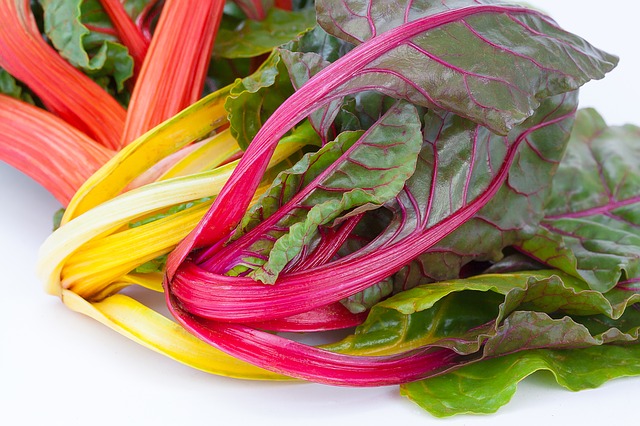

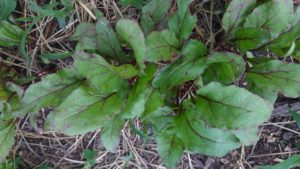
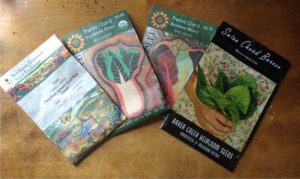
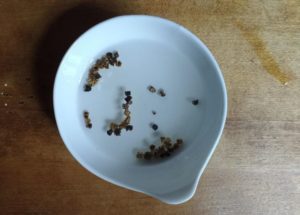
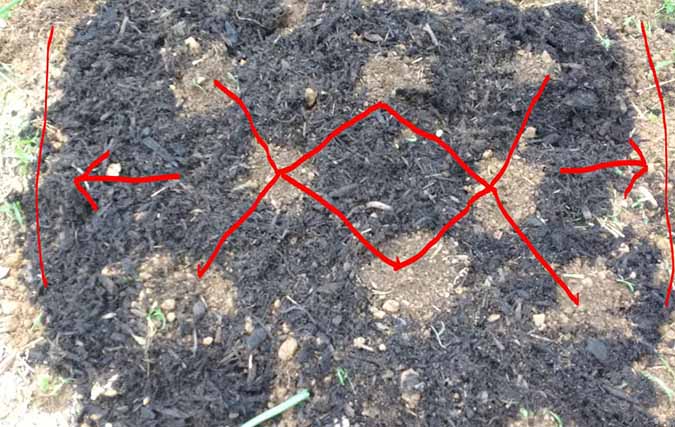
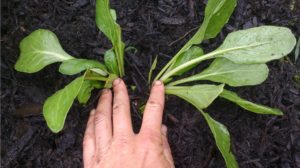








COMMENTS(6)
I loved the ideas for how to use chard. I had so much chard in the garden last year I thought we would drown in it all, but once I realized I could cook it just like spinach it was no longer a problem. No one ever complains they have too much spinach, right?
Hey Megan – I am with you! After that multi-course menu experience I became a huge fan of chard – a.k.a. my long-lasting spinach alternative! Hope you have an awesome harvest in your garden this year too. Tasha
You’re speaking my language. That sounds amazing. I can’t wait to try some of those options.
Hey Scott – Since you are the weed man, I’d love to see you come up with a multi-course menu on dandelions or wood nettle (or some other prolific weed) to make one of your posts soon! Thanks for reading! Tasha
I eat chard fresh in salads, use it for stuffed chard rolls, can it up plain or with tomatoes for winter use and dehydrate as many leaves as I can to make into flakes to add to soups and stews, mix in with ground meat for meat loaf, hamburgers and meat balls. My youngest is 14 and hates veges except corn on the cob and green beans…. I slip chard flakes into as many meals as I can to get her to eat more veges,
I also have a recipe for all greens including Swiss Chard. Cook up some some pieces of bacon with some diced up celery and chopped onions (I use green onions but whatever onion works for you. I usually steam the greens then add the mixture above with some dried cranberries and nuts if you want. The smell and the taste are awesome. Can’t wait to try the Lasagna recipe.